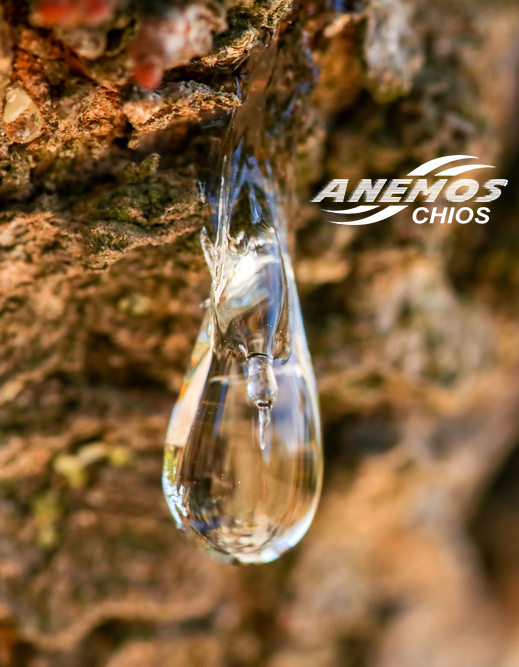Mastic -mastiha
Mastic is a natural resin that comes from an evergreen small tree (large shrub) which is cultivated successfully in the island of Chios, in the Eastern Aegean Sea.
This evergreen tree called Schinos, belongs to the family of Pistachia. (Botanical name: Pistacia Lentiscus var. Chia)
The average growth of the tree usually ranges from 1.5m (5 feet) to 3,5m (11 feet) tall and it begins to produce mastic at the age of 5 to 6 years old. This tree, after about 15 years, could give 60-250gr of its resin which is called mastic. The average production per tree is 100gr. In very exceptional cases very large old trees can produce 400gr of mastic, or even a bit more. This amazing tree thrives only in the South part of Chios Island. In South Chios we find 24 villages that deal with mastic tree growing and production.
Different names used for mastic are: Mastic, mastiha, mastika, masticha, mastica mastix etc.
Since 1997, Chios mastiha has been identified as Protected Designation of Origin product (PDO) and has been registered in the relevant community list.

Mastic cultivation
In this page you will find information about mastic. If you want to buy mastic, please go to our mastic -sales page.
Definition of mastic in dictionary: An evergreen shrub or small tree, Pistacia lentiscus native to the Mediterranean.
A hard, brittle, aromatic and transparent resin produced by this tree.
All Winter season
From the ancient times until today, little has changed in the mastic production process, which unbreakably connects it to the historical tradition of Southern Chios.
The mastic tree is a rather resilient plant with minor demands, that is why it grows well on arid, rocky and poor soil. Its roots are spread on the surface of the soil and can survive in conditions of absolute drought. On the other hand be extremely sensitive to cold and frost.
The preparation of the mastic tree starts in winter with pruning the trees branches, thus giving the tree a shape suitable for getting under it.
May - June
At about the same time a superficial plough is carried out in the field.
Ploughing is mostly done in order to clean the field from weed, at a depth of about 10cm because the roots of the mastic tree are just below the surface of the soil.
Around June is carried out the levelling and cleaning of the perimeter around the trunk of the tree, where the mastic will fall.
The next step is to spread white soil (calcium carbonate powder) on this area in order give mastic resin that will drip down the opportunity to dry and to facilitate gathering without altering mastic’s chemical composition.
Mid July - Mid September
In mid July, the bark of the tree trunk is “injured” with incisions 10-15mm long and 2-3mm deep. The incisions are done in weekly stages and total 20-100, depending on the age and size of the tree, through a 6-8 week period. From these incisions the mastic resin will come out in liquid drops that often look like tears.
Most of the mastic drips to the ground (on the white soil) and should stay there for 15-30 days until is dry enough to be collected.
Mid September - End September
Mastic collection starts usually mid August, with the work starting again very early in the morning.
The larger pieces are collected (along with dust, tree leaves and small stones) from the ground. They are spread in large wooden pans and taken in to the growers house to be stored in a dry and cool place.
The small pieces of mastic are collected Mid September from the tree trunk and from the ground.
November - February
The cleaning of mastic is a laborious task which starts November. Usually all the family participates and the cleaning process lasts throughout the winter period.
Mastic is washed and then the larger pieces are manually cleaned one by one with a small pointed knife.
The small pieces are cleaned in a different way.



